Diseases caused by bacteria, viruses - Airborne Diseases | 9th Science : World of Microbes
Chapter: 9th Science : World of Microbes
Airborne Diseases
Airborne Diseases
Human beings inhale
atmospheric air. Due to continuous inhalation of contaminated air the chances
for airborne microorganisms to find a host and cause infection are higher. Most
of the respiratory tract infections are acquired by inhaling air containing the
pathogen that are transmitted through droplets caused by cough or sneeze, dust
and spores. Airborne diseases are caused by bacteria and viruses. A few air
borne diseases and their modes of transmission are explained below.
1. Diseases caused by bacteria
Tuberculosis (TB)
It is one of the widely
occurring communicable diseases. It is caused by the bacteria Mycobacterium
tuberculosis. It mostly affects the lungs. Infected person has to be
treated with anti-tuberculosis drugs for a period of 6 months to one year.
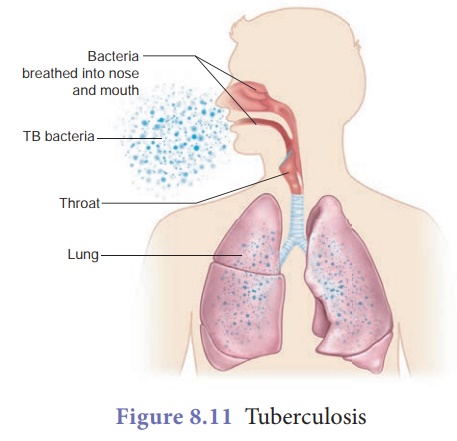
Diphtheria
It is caused by Cornybacterium
diphtheriae. It generally affects the upper respiratory tract (nose and
throat) and causes fever, sore throat and choking of air passage.
Whooping Cough
Whooping cough is caused
by Bordetalla pertussis. It also affects the respiratory tract
and causes mild fever, severe cough ending in whoop.
More information about
airborne diseases caused by bacteria are given in Table 8.3.
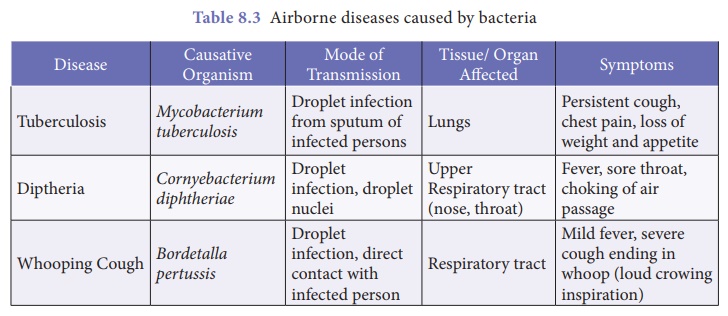
2. Diseases caused by viruses
Common cold
Common cold is an
infectious disease which affects the upper respiratory system and it is easily
spread. Symptoms of common cold include cough, painful throat, running nose and
sometimes fever. Though many viruses can cause this, it is generally caused by
the Rhinovirus.
Influenza
Better known as flu,
influenza commonly occurs during childhood. It is caused by Myxovirus resulting
in inflammation of nasal mucosa and pharynx.
Measles
Measles is caused by Rubeola
virus and it is easily transfered from infected people. Symptoms of measles
include eruption of small rashes in skin, cough, sneezing, redness of eye,
pneumonia and bronchitis. Affected individuals can recover from this by proper
rest and diet.
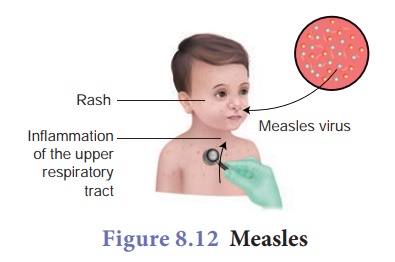
Mumps
It is caused by Myxovirus
parotidis and affects the upper respiratory tract. Some of the more common
symptoms of mumps include fever, headache, sore throat and swelling of parotid
glands which makes the jaw movement difficult.
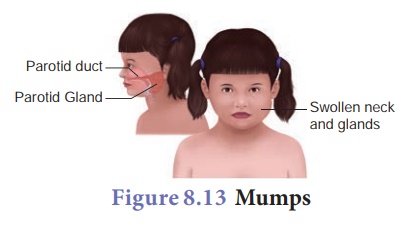
Chickenpox
It is common among
children and adults. It is a communicable disease caused by Varicella virus.
It is characterized by eruptions of the skin in the form of blisters or
spots in the body and face. The infected persons are isolated for a week until
blisters are crusted.
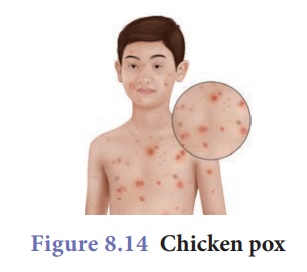

Related Topics